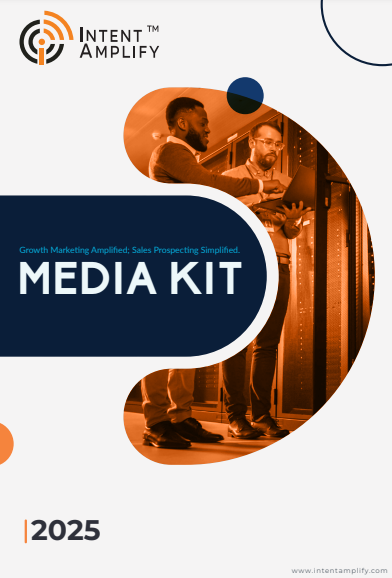
How to Create a Winning SaaS Email Marketing Strategy
- Last updated on: October 16, 2025
Email marketing is still one of the few channels in a crowded SaaS landscape that can bring a predictable and scalable return on investment (ROI). And yet, it is also the most misunderstood for B2B marketers. Affected by flooded inboxes, automated sequences, and data privacy limitations, B2B marketers have to deal with higher expectations. Currently, it is not about sending more emails but smarter ones that will lead to a qualified pipeline.
An effective SaaS email strategy is a combination of accurate targeting, behavioral insights, and value-driven storytelling. The main idea is not to nurture leads only but to use them as a complete revenue journey from discovery to adoption, renewal, and expansion.
Intent Amplify® is a company that builds high-impact email programs for technology, SaaS, fintech, and cybersecurity brands, which then become a source of measurable pipeline growth. In this guide, we will take you through the modern SaaS email marketing framework piece by piece, with the lifecycle segmentation, automation, personalization, deliverability, and performance optimization sections. In short, you will understand how to build a scalable, compliant, and revenue-focused B2B email marketing engine that will work across North America, EMEA, and APAC.
Define Your Strategy Around Pipeline Growth
Clarity of purpose is what essentially drives any SaaS email marketing strategy to success. Before you even think of making a campaign, make sure that the email objectives you have set are aligned with business outcomes that can be measured, for example, qualified pipeline growth, product activation, upsell, or retention. Any email must be explicitly understood as helping to advance prospects or customers through the lifecycle in some way.
Break down your customer journey into the most important stages – awareness, trial, activation, retention, and expansion. After that, decide what email sequences will be assigned to each stage. Awareness emails are aimed at educating and attracting; trial emails are used to nurture engagement; activation campaigns are there to convert usage into loyalty. In 2025, the average activation rate for SaaS and AI tools is 37.5%, with AI and Machine Learning leading at 54.8% and FinTech trailing at just 5%.
In the case of B2B SaaS, emails are not supposed to be isolated. You should integrate them with your CRM, marketing automation, and sales workflows. Make sure the messages are in line with your overall demand generation and account-based marketing (ABM) plans so that there is no difference in the message across the different channels. To put it briefly, make your strategy work in terms of velocity rather than volume – with each email, you should be able to get your audience one step closer to generating revenue.
Build and Segment a High-Quality Email List
An email campaign will not be efficient if it is not supported by a strong list. A SaaS marketer must always focus on quality instead of quantity. Develop a permission-based organic list through activities such as gated content, webinars, demo-sign-ups, and trial-registrations. Avoid list buying or scraping – it damages deliverability and brand trust.
In 2025, around 40% of email senders use double opt-in to validate list quality, while nearly 48% either skip it or are unsure of their process, a gap that often leads to poor engagement and deliverability issues
Ensure that the data you gather is valuable. Don’t be satisfied with just the basic contact information; additionally, include firmographics such as the industry, company size, and job role. This will enable you to form segments that indicate real buying intent and decision-making influence.
As your list grows, you will be able to divide the contacts into various groups that are dynamic and depend on factors such as lifecycle stage, engagement behavior, and persona. A CFO who is assessing ROI should not receive the same email as a product manager who is researching features.
You can leverage behavioral triggers like downloads, logins, or feature usage to deliver up-to-date, personalized content. Accurate segmentation makes your emails relevant to the receiver, thus getting their attention, which leads to higher engagement, conversions, and customer loyalty over time.
Design Structured Email Sequences and Flows
SaaS marketing is a field where consistency wins over spontaneity. Precisely, well-planned email sequences lead prospects to the buying journey. First, recognize the important moments in the lifecycle: onboarding, trial activation, engagement, renewal, and expansion, and then allocate the tailored sequences to each.
For instance, a welcome series should familiarize customers with the benefits of your product and further steps, whereas trial nurturing flows are about in-app actions and making the user experience easy and fruitful. Post-purchase sequences have the potential to both feature usage and upgrading encouragement. The main objective of every flow should be one – educate, convert, or retain.
Use automation to communicate with your behavior-triggered emails to send users based on their actions or to inform them of inactivity. After three days without logging in, a user may be greeted with a “need help getting started?” message. Time and cadence are still very important – communications can be very frequent at the initial stages, while long-term nurture flows should be spaced out gradually. Behavior-led, structured automation allows for timely, relevant, and conversion-driven emails to be sent. Passive subscribers are then turned into active users.
Craft Emails That Convert
Conversion-focused emails blend clarity, personalization, and value. Every message should serve one purpose – prompting action. Begin with a subject line that sparks curiosity without resorting to clickbait. Pair it with preview text that reinforces your message and creates urgency.
Keep your copy concise and conversational. Focus on outcomes, not features – show how your solution makes life easier, faster, or more profitable. Limit each email to one clear call to action (CTA). Multiple CTAs often confuse and reduce click-through rates.
Personalization matters, but context matters more. Go beyond “Hi {First Name}.” Use behavioral and firmographic data to tailor messaging – like sending activation tips to trial users or ROI insights to decision-makers. Add social proof through case studies or success metrics to build trust. Finally, design for mobile and accessibility. Simple layouts, readable fonts, and clear CTAs ensure your emails look professional and perform everywhere. Mobile-optimized emails have ~33% more click engagement; non-optimized ones face high deletion rates.
Technical Setup and Deliverability
A clean and reliable technical foundation is what keeps a SaaS email program running behind the scenes. The very first thing you need to do is to authenticate your domain with SPF, DKIM, and DMARC. This will help you to establish sender credibility. To protect the reputation of your brand’s primary account, you should use a dedicated sending domain or subdomain, especially when you are scaling campaigns.
Be sure that the email platform you choose supports automation, advanced segmentation, and API integrations with your CRM or product analytics tools. Such an arrangement makes sure that the data moves freely across marketing and sales systems.
List hygiene is what deliverability is all about – you should remove inactive contacts, manage bounces, and avoid spam-triggering keywords. New IPs should be warmed up slowly so that they can gain trust with ISPs. To be able to spot the issues at an early stage, you should keep checking your metrics, such as bounce rate, spam complaints, and inbox placement on a regular basis.
Compliance is necessary. You need to conform to GDPR, CAN-SPAM, and other privacy laws of different regions. In addition to that, you need to provide your subscribers with the option of an easy unsubscribe. A technically sound foundation is what will actually allow your well-written messages to be received by and to impact your audience’s inbox.
Measure, Analyze, and Optimize Performance
Your SaaS email strategy can be made more powerful through continuous optimization. Initially, you should set metrics that not only show true business impact but also ignore vanity metrics like open rates. The metrics should be click-throughs, conversions, trial activations, MQL generation, and revenue influenced by email.
A/B testing must be employed for performance fine-tuning. You can try out subject lines, send times, CTA placement, and message length; however, only one variable should be tested at a time to be able to identify the impact. By segment and lifecycle stage, monitor engagement trends to figure out what causes activation or drop-off.
Make email data integration with your CRM and analytics stack to get a clear picture of the funnel from the first touch to the closed deal. This closed-loop reporting is a way to align marketing, sales, and customer success around shared goals. Your email program should be like a living system that you keep on reviewing performance monthly, cleaning your list quarterly, and evolving your messaging based on what moves the pipeline forward.
Adapting for Global and Enterprise SaaS Audiences
Scaling SaaS email marketing globally requires balance – consistency in brand voice with flexibility in regional relevance. Schedule emails based on time zones and adjust messaging to align with regional market maturity and cultural nuances.
Enterprise audiences demand tailored communication. When targeting large accounts, design account-based email sequences that engage multiple personas – decision-makers, influencers, and end users within the same organization. Align with sales teams to ensure messaging complements ongoing outreach across channels like LinkedIn and events.
Compliance is critical. Respect local privacy regulations such as GDPR, CASL, and PDPA, and always honor opt-out preferences. Finally, avoid over-automation. Enterprise buyers expect authenticity. Maintain a professional tone while balancing personalization with credibility. Global scalability comes not from sending more emails – but from delivering the right value to every inbox, anywhere in the world.
Common Pitfalls and How to Avoid Them
Even seasoned SaaS marketers fall into traps that limit email performance. The first is mass emailing without segmentation. Sending generic content to all contacts reduces engagement and increases unsubscribes. Always segment by role, lifecycle stage, and engagement level.
Another common error is over-automation. Relying solely on drip sequences makes communication feel robotic. Regularly audit your flows and add personalized, human touchpoints – especially for enterprise accounts.
Neglecting email deliverability can cripple even the best campaigns. Monitor bounce rates, sender reputation, and spam complaints closely. Warm up new domains and remove inactive subscribers quarterly. Also, a lack of alignment with sales and customer success creates disjointed messaging. Encourage feedback loops – ask what content drives conversations or conversions. Finally, ignoring international compliance exposes you to risk. The smartest marketers play the long game – prioritizing relevance, quality, and trust over volume.
Building Your 2025 SaaS Email Playbook
In 2025, SaaS email marketing continues to outperform most digital channels – but success depends on precision, personalization, and strategy. The goal is no longer just to send emails, but to build a lifecycle-driven engagement engine that nurtures prospects into long-term customers.
A winning email strategy aligns content with pipeline objectives, leverages automation based on behavioral data, and constantly evolves through testing and performance analysis. Marketers who prioritize relevance over reach see stronger engagement and measurable revenue impact.
FAQs
1. What makes SaaS email marketing different from regular email marketing?
SaaS email marketing focuses on the entire customer lifecycle – awareness, trial, activation, and renewal – rather than just acquisition. It relies heavily on behavioral data, automation, and product usage insights to drive conversions and retention.
2. How often should SaaS companies email their prospects or users?
Frequency depends on the stage of engagement. Trial or onboarding users may need daily or every-other-day emails, while long-term customers respond best to weekly or monthly updates. The key is relevance, not volume.
3. What are the most effective types of SaaS email campaigns?
The most impactful include welcome/onboarding series, trial nurturing, feature education, renewal reminders, and expansion or upsell campaigns. Behavior-triggered emails based on in-app actions often yield the highest ROI.
4. How can SaaS marketers improve email deliverability?
Authenticate your domain (SPF, DKIM, DMARC), clean lists regularly, avoid spammy language, and warm up new IPs gradually. High engagement and low bounce rates help maintain sender reputation.
5. How do you measure success in SaaS email marketing?
Track metrics that connect to business growth – click-through rate, trial activation, product adoption, MQL generation, and churn reduction. Revenue impact matters more than open rates alone.




